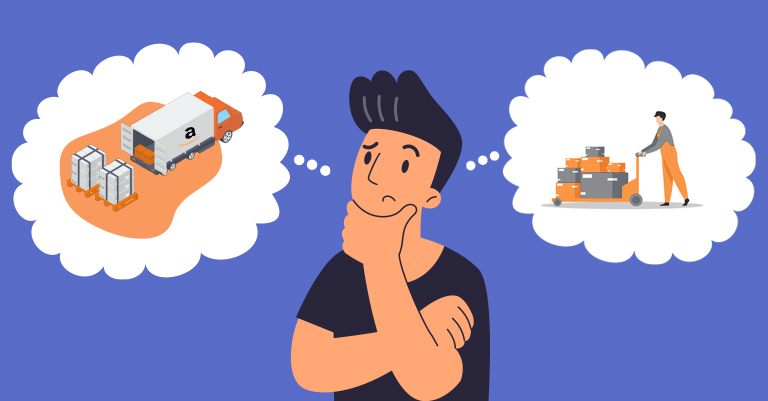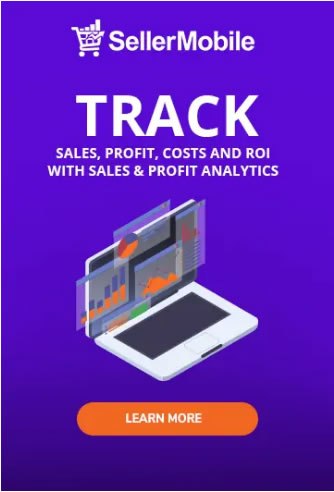The order fulfillment process is a tedious one. You want to select the best service to get your products to your customers, but you also need to figure out which type of order fulfillment service is the most fitting one for you and your business. As a seller, you need to understand which option provides a better Amazon inventory management system to meet your needs. Whether it’s 3PL, FBA, FBM or a mix of all three. In the long run, the goal is to improve logistics and optimize supply chain management, which helps keep your customers satisfied.
What is 3PL?
3PL, which is the common abbreviation for third-party logistics, is an outsourced service that manages a company’s supply chain by providing storage, handling shipping and returns, and managing overall order fulfillment. This allows companies to save on logistics costs and operate more efficiently.
Pros of 3PL
- Fulfillment Optimization and Automation
Outsourcing to a 3PL can speed up the order fulfillment process for sellers. This means that storage, packing, shipping, processing returns, etc. are handled by someone else, namely a provider who has expertise in fulfillment. Most 3PLs will also support multiple sales channels so you can process orders from Shopify, Etsy, Amazon, and more. You can also distribute and store inventory across multiple warehouses managed by your 3PL for a more cost-efficient way of shipping products to your customers.
- Save on Additional Costs
3PLs can handle a high volume of orders across multiple sellers. You get more than what you pay for since they have lower shipping rates and fulfillment costs. Sellers no longer have to pay for extra staff since fulfillment centers already have their own in-house staff built in. Larger and more established fulfillment centers often have partnerships with shipping carriers to offer discounted prices to sellers.
- Scale Business Quicker
Sellers can shift their efforts to marketing and growing their business while the 3PL is responsible for logistics concerns. When you use a 3PL to handle fulfilment and logistics, you can focus on running PPC ad campaigns and grow your customer base. Easily and safely request for product reviews with the help of SellerMobile’s Request for Review Chrome extension to build your brand reputation.
Cons of 3PL
One of the reasons sellers are hesitant to use a 3PL is because of the associated fees. Some 3PLs charge for setting up software and training staff. There are also fees for receiving shipments, storage fees, and additional charges for the fulfillment process. These fees are charged monthly so it’s important for sellers to always generate enough sales to make a profit. Partnering with a 3PL might not be the best option for sellers that are still starting out.
What is FBA?
Fulfillment by Amazon (FBA) lets companies store their products in Amazon’s fulfillment centers, and Amazon is in charge of fulfilment, shipping, and all logistics. Amazon packs and ships your products to your customers as well as handles returns and provides customer service. To learn more about Amazon inventory management system, check out our blog on how you can utilize Amazon FBA in 2021.
Pros of FBA
- Amazon Prime Benefits
With FBA comes benefits like being able to reach millions of Amazon Prime subscribers and offer free one-day or two-day Prime shipping. You can widen your reach with multi-channel and international fulfillment. You will get connected with even more customers through Amazon Prime promotions.
- Customer Service
When a customer buys your products, their order is sent directly to Amazon fulfillment centers for Amazon itself to process. They are in-charge of packing and shipping your orders to customers, leaving you free to focus on other aspects of your business. If a return comes around, Amazon is in charge of processing it. They also offer 24/7 customer support on stand-by to answer any concerns.
Cons of FBA
While Amazon FBA presents a transparent fee structure, the fees are higher compared to 3PL, especially during the holiday season. Another downside is that Amazon itself could be a direct competitor if you sell the same products, the products Amazon ships out to your customers might not be the same products you shipped to them. This essentially means Amazon will ship out the item from the warehouse closest to your customer, unless it’s a private label product. There’s also almost no order customization since all FBA orders are shipped out using the standard Amazon boxes.
What is FBM?
Fulfilled by Merchant (FBM) lets sellers pack, ship, and deliver items directly from their own warehouse to customers. FBM can be handled by the seller directly or they can partner with a 3PL to fulfill orders. It’s important for sellers to have solid Amazon inventory management in place when handling their own orders.
Pros of FBM
- More Control
Since you are handling the fulfillment process, you get to fully customize how you ship out your orders. Your products are stored in your own warehouse and you can control how much inventory to store at any given time. Basically, you have full control over your own logistics and fulfillment and don’t have to depend on any outside player during the process.
- Better Profit Margins
You won’t be paying any hidden or extra fulfillment fees. Say goodbye to paying long-term storage fees in Amazon fulfillment centers. You can choose from multiple couriers and choose which one has the cheapest quotation to save on fees.
Cons of FBM
- Competition with FBA Sellers
Customers often prefer buying products with a Prime badge that are fulfilled by Amazon. One way to counter this is by applying for Seller Fulfilled Prime (SFP), but you have to meet Amazon’s high standards. Here’s more information to help you compare between FBA vs. SFP if you’re considering a change.
- Overhead Costs
Even if you’re no longer paying FBA fees, you still have to consider expenses involved in handling and shipping your own products. This includes everything necessary to store inventory, package products, and ship them to customers. Anything from storage costs, labor costs, utilities, product packaging costs, and more will add up.
The Bottom Line
There’s no “one” best solution among the three, since it all comes down to your preference and needs as a seller. You can even mix and match your fulfillment options based on your business model. At the end of the day, getting your products to customers safely and on-time is the most important thing. To achieve this successfully, you’ll need third-party Amazon inventory apps like SellerMobile to help manage your inventory, keep track of sales, and optimize business processes.





